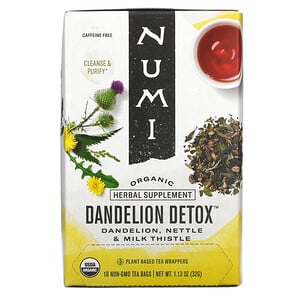What is the difference between black and green tea?
Humans have been drinking tea for more than 4000 years. It has become one of the most popular drinks worldwide, second only to water.
Both Green and Black tea are made from the leaves of the Camellia sinensis plant.(Rivers, et al, 2018) The key difference between the two is that black tea is oxidized, and green tea is not.
To make black tea, the leaves are first rolled and then exposed to air to trigger the oxidization process. This reaction causes the leaves to brown and allows the flavors to become robust and intense. In contrast, green tea is processed to prevent oxidization and is much lighter in colour.
These teas may differ in processing methods; however, they share some of the same health benefits. (Gardner, et al,2007). Both green and black tea are rich in protective antioxidants called polyphenols. They contain a subgroup of polyphenols called flavonoids thought to protect the heart.
Black and green tea health benefits
One study found that green and black tea were equally effective at preventing blood vessel plaque formation. (Vinson, et al, 2004). The study also found both types of tea helped reduce LDL (bad) cholesterol. Green and black can lower blood pressure. Drinking up to 3 cups a day could reduce the risk of heart attack by 11%. Drinking these teas may improve bone density, weight management and glucose control.
According to Hematic Food YouTube entitled Black tea vs green tea, drinking either tea improves blood flow or lowers blood glucose levels. Tea contains fluoride beneficial for bone health and helps protect teeth from decay.
Tea side effects
Both teas contain caffeine, a known stimulant. Caffeine aids the release of mood enhancing neurotransmitters like dopamine and serotonin. As a result, caffeine can boost alertness, mood, vigilance, reaction time and short-term recall.
Green tea is an excellent source of antioxidant epigallocatechin-3- gallate (EGCG). This is the most powerful antioxidant and responsible for green tea’s many health benefits. Green tea has anti-inflammatory properties when applied topically to the skin. Skin circulation was found to be improved in the affected areas.
Green and black tea offer similar benefits for heat and brain. While green tea may contain more powerful antioxidants, the evidence does not strongly favor one over the other. Both contain caffeine and L-theanine, which have a calming effect. More research is needed, but there is some evidence that drinking tea regularly may lower the risk of diabetes, high cholesterol, kidney stones, Parkinson’s disease, Osteoporosis, and dental cavities.
It is important to note that both teas do have side effects and therefore check with your family doctor before consuming. The health benefits of these teas have been hailed for years. However, in adults there are a few known side effects.
Black tea and blood pressure
People with caffeine sensitivities could experience insomnia, anxiety, irritability, or stomach upsets after drinking tea. Further, in rare cases if high quantities of green tea are consumed liver damage may result. Stimulant medication may clash with green tea which is known to increase blood pressure and heart rate.
As this article goes further it begs the question, how is tea brewed for drinking? Tea brewing can be as easy as adding hot water and enjoying the whole tea leaf. More companies are offering their full leaf teas packaged into pyramid shaped bags made of paper or cloth materials which allow for fuller infusions than traditional tea bags. In addition, some companies are launching teabags with higher grades of tea leaves than traditional teabags.
In-cup-infusers are fantastic for new tea drinkers and for office brewing or while traveling. There are many types of in-cup tea infusers on the market, but the basic principles are the same across all of them. Drop a tea infuser with tea inside, into the cup, add the hot water, steep, remove the infuser and enjoy the tea. There are different sizes of in-cup tea infusers, select the size that fits the cup or mug used, that allows enough room for the tea to infuse. The best infusers are made from durable non-leaching plastics or flavor neutral metals.
Making iced tea is as easy as brewing tea in hot or cold water, cold water takes longer for the flavors to infuse, in a jug or pitcher with a tight sealing lid. Cover and chill for 8 to 12 hours. The flavor will be stronger the longer it is left to infuse. Iced tea can be made with any flavor of tea. The danger of iced tea, no matter the brewing method, any iced tea has the potential for bacteria growth. If there is a thick or syrupy appearance to the tea or it smells off, these are signs of bacteria, and the tea needs to be discarded. Make smaller batches more often to avoid this.
Types of tea
Tea, green or black is a great dietary addition provided there are no adverse effects to health or well-being. Tea comes in herbal varieties, green tea, and varieties of black tea such as Earl Grey, English breakfast, and Oolongto name but a few. Each variety has its own distinct flavor and nuances.
Enjoy!!
References
Gardener, E., Ruxton, C. & Leeds, A. Black tea- helpful or harmful? A review of the evidence. Eur J Chin Nutr61, 3-18 (2007).
Rivers, M.C & Wheeler, L. (2018)Camellia Sinensis Red List of Threatened Species.
Nagao T, Meguro S, Hase T, et al. A catechin-rich beverage improves obesity and blood glucose control in patients with type 2 diabetes. Obesity (Silver Spring) 2009; 17: 310-7.
Vinson J.A, Teufel K, Wu N. Green and black teas inhibit atherosclerosis by lipid antioxidant and fibrinolytic mechanisms. J Agric Food Chem, 2004 June 2.
Yang C, Du W, Yang D. Inhibition of green teapolyphenol ECGC (-) epigallocatechin -3- gallate on the proliferation of gastric cancer cells by suppression canonical wnt/ 3 – catenin signaling pathway. Int J Food Sci Nutr. 2016 Nov; 67 (7): 818-27 doi.

